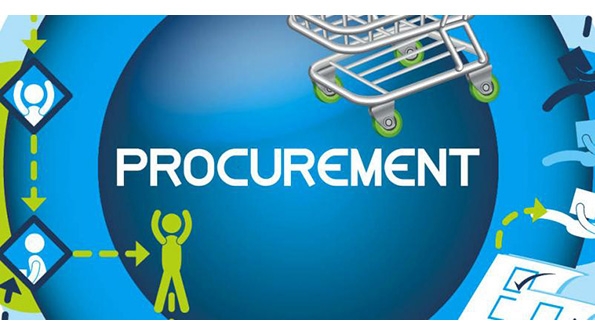
It appears there are renewed fears for an increased fragility of supply chain networks in the face of continued catastrophic natural disasters and or sudden shifts in macro-economic forces. Unexpected costs can arise where a business fails to put in place a robust risk mitigation plan to cater for supply chain disruptions. As the scale of the procurement department increases in scope, size and complexity, so too does the supply chain risks. To achieve a high level of distinction, procurement requires the delivery of exceptional value by utilising procurement risk reduction strategies in every facet of the business.
supply chain with CHARLES LOVEMORE NYIKA
Within the supply chain profession, there is obviously no illusion over the level of vulnerability that the business is likely to encounter in the event of supply chain disruptions or the potential drawbacks that come with such challenges as short supply or no supply. Common problems across all industries and markets include depressed consumer demand, uncertain demand outlook, tighter liquidity, commodity price volatility, global recession, economic volatility, geo-political instability, shifting markets and natural disasters.
Due to the continued occurrence of catastrophic natural disasters, business people the world over are slowly coming to terms with the fact that it is no longer business as usual. Companies are, therefore, realising the need to ensure that the gap between risk identification and mitigation should not be as wide. Following this realisation, it stands to reason that procurement practitioners must come up with various supply chain visibility strategies which enable them to prepare for risks. Procurement must take a leading role in co-ordinating the dissemination of information on supply market trends to other cross functional teams. As a way of minimising risk, supply market intelligence should therefore be regarded as a “must have” at all times.
The current supply chain landscape indicates that those macroeconomic winds of change will continue to blow worsening the volatility of supply markets. The upsurge of new forces being created by the proliferation of social media, daily scientific discoveries and the emergence of artificial intelligence is compounding the supply chain risks. Such developments can have and will have a significant impact on the risk of supply. With this in mind, best in class companies are very quick to find ways to use time as a competitive advantage by being able to react faster than the rest of the pack whenever there is an occurrence of supply chain disruption. This can only happen where procurement keeps itself abreast of supply market trends and developments and share same with other internal customers as and when they happen or just before they happen.
Experience over the years has demonstrated that supply chain risks are an ever evolving threat and conducting scenario planning exercises may assist in the identification of potential problem areas without significantly delaying or affecting production timelines. Procurement should not be sitting on the sidelines watching the supply sources of the business dwindling without taking any action. They should be seen to be in the middle of action influencing major risk management practices by ensuring that the organisation’s supply sources are continuously widened by introducing new players, while periodically reviewing the performance of suppliers, past and current. As part of risk management, procurement practitioners are now required to have a deeper understanding of capabilities of their vendors and the vendor’s capacity to manage supply chain disruptions in the event of one occurring unexpectedly.
In this complex but opportunity rich environment, there is now a renewed management focus on crafting risk reduction and mitigation strategies by putting more emphasis on “what will or could happen rather than what did happen.” The era of plentiful supply is no more. To help the organisation navigate the future, procurement practitioners should be making business decisions based on evidence and analysis by monitoring economic developments such as commodity price indexes, inflation and general economic conditions on the ground. In an attempt to prepare for unforeseen shifts in demand, procurement decisions should not be based on clairvoyance but on supply chain data monitors which provide demand side visibility through the use of cross functional corporate conversations between procurement, production and marketing.
For procurement practitioners to stay ahead of the risk curve, there is need to ensure supplier risk analysis goes beyond the first tier supplier and extend to the supplier of the supplier or the customer of the customer. In some instances, procurement practitioners can mitigate supplier risk by putting in place a dual sourcing arrangement for key requirements. However, without careful risk analysis, it may turn out that both the first tier supplier and the second choice supplier may heavily rely on one downstream supplier for their inputs. In the event of supply chain disruptions on that one downstream supplier then the whole supply chain will break down.
- Chamisa under fire over US$120K donation
- Mavhunga puts DeMbare into Chibuku quarterfinals
- Pension funds bet on Cabora Bassa oilfields
- Councils defy govt fire tender directive
Keep Reading
Modern day procurement practitioners could also continuously utilise the supply chain market peer network to share supplier risks, demand forecasts and general performance capabilities of certain suppliers before making any significant financial obligations. Generic information about supplier performance is obtainable free of charge from fellow procurement professionals because every supplier is the next company’s supplier or the next company’s customer. Procurement practitioners across the industry divide must continuously share information on new exciting products on the market, substandard products, delinquent suppliers and those that are on the brink of bankruptcy.
In this social media world order, there are increasingly highly empowered and well informed consumers who make it their business to voice concerns even in matters that do not directly affect them. The situation is compounded by the fact that consumers the world over can easily share information at short notice through social media platforms. In some instances, sharing product information is buoyed by environmental concerns bordering on too much enthusiasm which can significantly influence the uptake of company products either in a negative or positive way. Procurement should, therefore, only deal with those suppliers which are beyond reproach, otherwise they risk being dragged into the social media wars.
While risks have always been around since the dawn of business, procurement will need to treat supply chain risk mitigation as a strategic imperative in order to ensure that there is always a protective wall around the business from the uncertainty and turbulence that is encountered from the ever-changing economic landscape.
Charles Lovemore Nyika is a Supply Chain Practitioner based in Harare. For views and comments, he can be contacted at nyikac@yahoo.com










